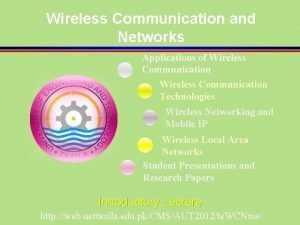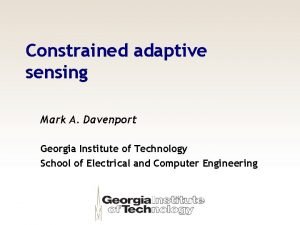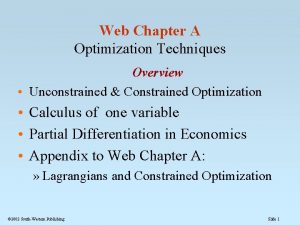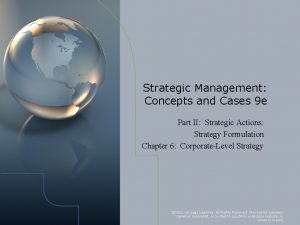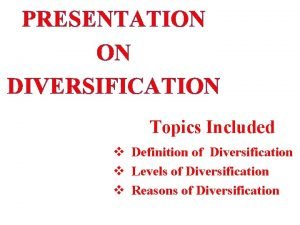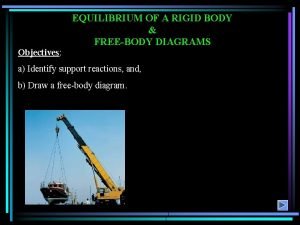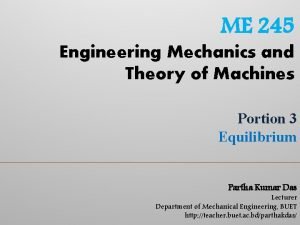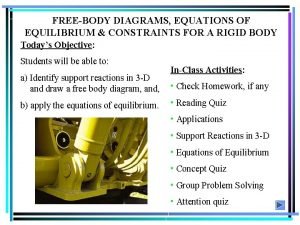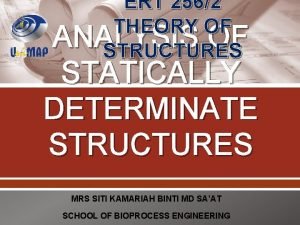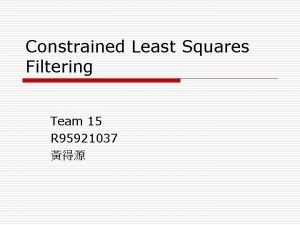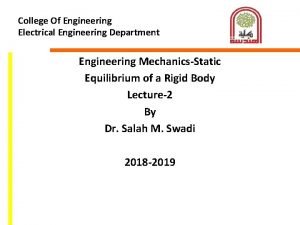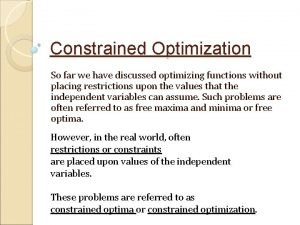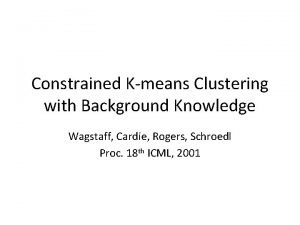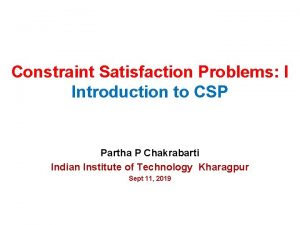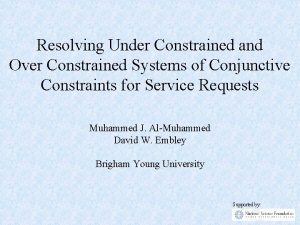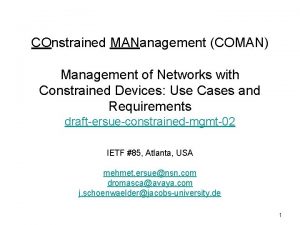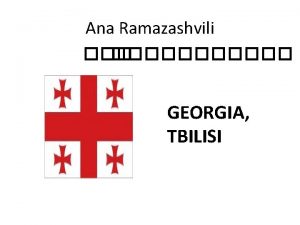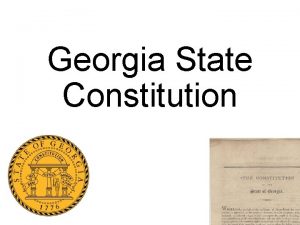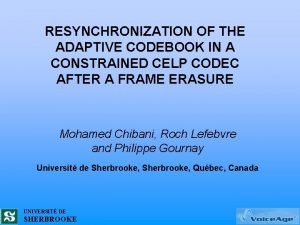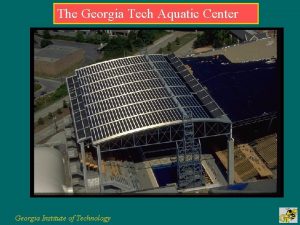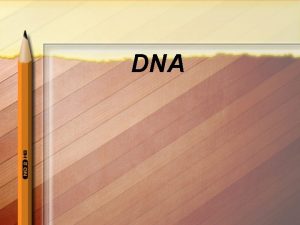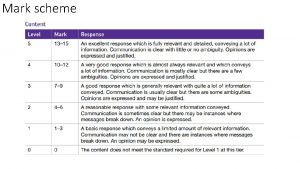Constrained adaptive sensing Mark A Davenport Georgia Institute

















- Slides: 17

Constrained adaptive sensing Mark A. Davenport Georgia Institute of Technology School of Electrical and Computer Engineering

Andrew Massimino Deanna Needell Tina Woolf

Sensing sparse signals -sparse When (and how well) can we estimate from the measurements ?

Nonadaptive sensing Prototypical sensing model: There exist matrices and recovery algorithms that produce an estimate such that for any with we have For any matrix with and any recovery algorithm such that , there exist

Adaptive sensing Think of sensing as a game of 20 questions Simple strategy: Use half of our sensing energy to find the support, and the remainder to estimate the values.

Thought experiment Suppose that after the first stage we have perfectly estimated the support

Benefits of adaptivity Adaptivity offers the potential for tremendous benefits Suppose we wish to estimate a nonzero has amplitude : -sparse vector whose • No method can find the nonzero when • A simple binary search procedure will succeed in finding the location of the nonzero with probability when • Not hard to extend to -sparse vectors • See Arias-Castro, Candès, D; Castro; Malloy, Nowak Provided that the SNR is sufficiently large, adaptivity can reduce our error by a factor of !

Sensing with constraints Existing approaches to adaptivity require the ability to acquire arbitrarylinear measurements, but in many (most? ) real-world systems, our measurements are highly constrained Suppose we are limited to using measurement vectors chosen from some fixed (finite) ensemble • How much room for improvement do we have in this case? • How should we actually go about adaptively selecting our measurements?

Room for improvement? It depends! If is -sparse and the are chosen (potentially adaptively) by selecting up to rows from the DFT matrix, then for any adaptive scheme we will have On the other hand, if contains vectors which are better aligned with our class of signals (or if is sparse in an alternative basis/dictionary), then dramatic improvements may still be possible

How to adapt? Suppose we knew the locations of the nonzeros One can show that the error in this case is given by Ideally, we would like to choose a sequence according to where sequence denotes the matrix with rows given by the

Convex relaxation We would like to solve Instead we consider the relaxation The diagonal entries of tell us “how much” of each sensing vector we should use, and the constraint ensures that (assuming has unit-norm rows) Equivalent to notion of “A-optimality” criterion in optimal experimental design

Generating the sensing matrix In practice, tends to be somewhat sparse, placing high weight on a small number of measurements and low weights on many others Where “sensing energy” is the operative constraint (as opposed to number of measurements) we can use directly to sense If we wish to take exactly measurements, one option is to draw measurement vectors by sampling with replacement according to the probability mass function

Example DFT measurements of signal with sparse Haar wavelet transform (supported on connected tree) Recovery performed using Co. Sa. MP

Constrained sensing in practice The “oracle adaptive” approach can be used as a building block for a practical algorithm Simple approach: • Divide sensing energy / measurements in half • Use first half by randomly selecting measurement vectors and using a conventional sparse recovery algorithm to estimate the support • Use this support estimate to choose second half of measurements

Simulation results

Summary • Adaptivity (sometimes) allows tremendous improvements • Not always easy to realize these improvements in the constrained setting – existing algorithms not applicable – room for improvement may not be quite as large • Simple strategies for adaptively selecting the measurements based on convex optimization can be surprisingly effective

Thank You! ar. Xiv: 1506. 05889 http: //users. ece. gatech. edu/~mdavenport
 Andrea goldsmith wireless communications
Andrea goldsmith wireless communications Constrained nodes and constrained networks
Constrained nodes and constrained networks Scada transport over llns with map-t
Scada transport over llns with map-t Mark a. davenport
Mark a. davenport Constrained and unconstrained optimization in economics
Constrained and unconstrained optimization in economics What is related constrained diversification
What is related constrained diversification What is related constrained diversification
What is related constrained diversification Improperly constrained
Improperly constrained Improperly constrained
Improperly constrained Constrained random verification
Constrained random verification Tower crane free body diagram
Tower crane free body diagram Statically determinate and indeterminate structures
Statically determinate and indeterminate structures Constrained least square filtering
Constrained least square filtering Improperly constrained
Improperly constrained Constrained optimization substitution method
Constrained optimization substitution method Billenko
Billenko Rational constrained choice
Rational constrained choice Crossword puzzle constraint satisfaction problem
Crossword puzzle constraint satisfaction problem

